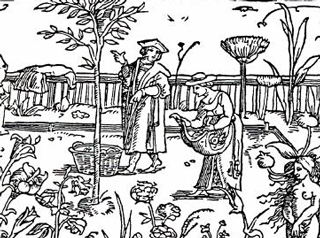Human Flower Project
Monday, November 28, 2011
A Plant-Wise Tactic for Teachers
The U.S. Botanic Garden supplies an exercise in introspection, observation and botanical education—a way to keep minds green between now and the holidays.

Find a partner, choose a plant and let the learning begin
The Garden of Health,Antwerp 1533
Image: via metahistory
Classroom teachers limping to the red velvet rope of Christmas holidays may need some oxygen about now, and assignments.
We offer this simple but interesting idea supplied by the U.S. Botanic Garden: “Are Plants Like Us?”
The six-page handout opens with a “family tree of plants” we found intriguing. To discover carrots and ginseng were botanical neighbors was not a surprise, but carnations and beets? Amaryllis and onions? Learning that these ornamental plants and vegetables were near relatives, we began to think about some of their common characteristics, like the leaf shape of begonias and cucumbers, the bulbs of onions and amaryllis. (It’s encouraging to think there’s an intuitive side of botany.)
The pamphlet then sends students out among plants with a partner, to consider how plants and people are alike and how they differ, and to examine the peculiarities of epiphytes and desert plants.
One part of the assignment asks, “What can plants do that people can’t do?” As recommended, it’s best to have a particular species in mind. Some plants, people too, can spend the winter out of doors, Some can’t. Same with refraining from gossip.




